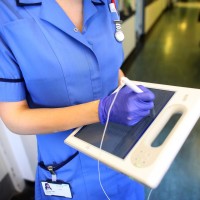Broke and desperate NHS needs you again!

The Home Office has temporarily lifted restrictions on recruiting non-EU nurses in a bid to help ease some of the pressure on the NHS.
Health Secretary Jeremy Hunt announced: “The nursing profession is being added to the Shortage Occupation List, which enables employers to recruit personnel from outside the European Union more easily.”
Mr Hunt went on to add that “safe staffing” across UK hospitals and care facilities is a “crucial priority”. Safe staffing is the term used by the NHS for their policy of trying to make sure that there are enough suitably trained and qualified nurses and other health care professionals to properly look after patients.
The Health Secretary went on to say: “The temporary changes announced today will ensure the NHS has the nurses it needs to deliver the highest standards of care without having to rely on rip-off staffing agencies that cost the taxpayer billions of pounds a year.”
The Migration Advisory Committee (MAC) – an independent public body that advises UK Immigration on immigration issues, and the Shortage Occupation List – said that it has been asked by the Government to review whether nurses should be included on the List on a permanent basis. The review will lead to MAC making recommendations to the Government by 16 February 2016.
Last month, the NHS Employers Organisation along with the heads of 10 NHS trusts said that a shortage of nurses from non-EU nations resulting from Tier 2 immigration rules would be “felt acutely” during the winter months.
However, at the time of these comments, the Home Office stated that existing Tier 2 Certificates of Sponsorship allocated to employers to enable them to bring in nurses had not been fully exhausted. A spokesperson for the government body said: “Over 1,400 Tier 2 Certificates of Sponsorship for nurses have been issued to NHS trusts since April this year. However, more than 600 of those places allocated for April and May [2015] have been returned unused.”
The UK’s healthcare industry has been left with a nursing shortfall of 24,000 staff this year according to consultancy firm, Christie & Co, due to a combination of tougher requirements to obtain Tier 2 visas, spending cuts and a decline in student numbers.
Christie & Co, a firm specialising in providing business advice across many specialist sectors, say that although there has been an increase in EU immigration numbers, 7,000 fewer nurses entered the UK in 2014-15, compared with 2003-04. Nurses that did come to the UK in 2015 from the EU were most likely to be from Italy, Portugal and Spain.
A decline in UK and overseas students enrolling on nursing courses have also hit the industry sector. Consequently there are fewer UK and international students qualifying to become nurses each year.
In 2014, the Health and Social Care Information Centre (HSCIC) published a report showing how Britain’s healthcare industry relies on the recruitment of overseas nationals. In particular, the report highlights that 11% of all healthcare staff and 26% of doctors in the UK are foreign nationals, with personnel employed from over 200 countries.
Commenting on the report at the time of its publication, Tim Finch of the Institute for Public Policy Research think-tank, said: “These statistics hold lessons for UK immigration policy.”
The interim changes announced last week mean that nurses from outside the EEA applying for a Tier 2 visa to work in the UK will, as long as they meet the usual requirements to work as a nurse in Britain, in almost all cases gain enough points under the Tier 2 points-based system for immigration to the UK. Additionally, this now means that there are an unlimited number of Tier 2 General visas for nurses sponsored by an UK employer with a Tier 2 sponsorship licence.
In 2011, an annual immigration cap of 20,700 Tier 2 general visas was introduced for non-EU workers, except for those in occupations on the Shortage Occupation List. In 2014-15, around one quarter of visas under the cap were taken up for healthcare roles. Occupations on the Tier 2 Shortage Occupation List do not come under the cap.
The NHS paid a record £3.3 billion on agency doctors and nurses in the last financial year, more than the cost of all that year’s 22 million A&E admissions combined. Last year spending on temporary workers rose by £800 million, which is equal to the total NHS deficit across the country.










